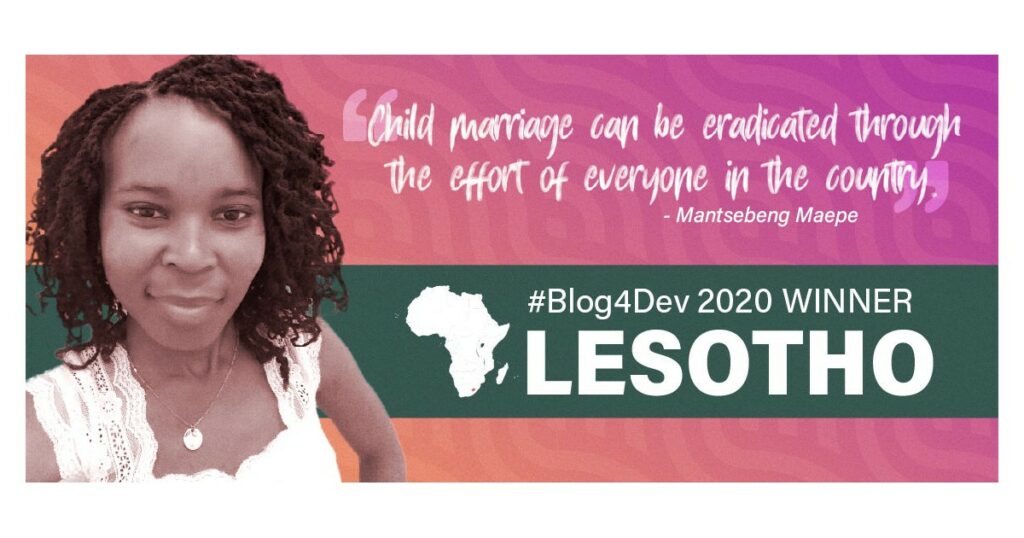In this winning Blog4Dev post, the author imagines a future in which child marriage in Lesotho has been eradicated.
“Mama, why does that picture show a 13-year-old girl getting married to an old man?” asked Sello with a frown. The year is 2030, Sello and his mother are at the national museum viewing artifacts. He, a 10-year-old, looks bewildered. ‘Masello, his mother, ventures on to explain the issue of child marriage that used to exist in the past to her son, who looks appalled at the history. “So how did you eradicate this monstrous crime against humanity, mama? This truly feels like a tale.”
How did Lesotho achieve eradication of child marriages? Through the effort of everyone in the country. Lesotho believed that it takes a village to raise a child, and through this principle, managed to eradicate what had arguably been the biggest challenge for the country. Through community engagement, citizens began examining the root causes of child marriage. Culture, socio-economic development, low status attached to women and education were identified as some of the root causes for early marriage.
With this information, leaders developed a national strategic vision plan to end child marriages with specific timelines, clear targets and indicators. The president began by prioritizing the fight against child marriages in the national budget, which gave the government enough resources to help in fighting child marriages. The customary marriage law, which did not stipulate any age in which a child could be married—thus indirectly endorsing child marriages—was amended and penalties for child marriages were put in place. There were countrywide social mobilization campaigns held in communities where child marriages were rampant.
Since culture was one of the main drivers of child marriages, respected local community leaders were targeted to champion the fight against child marriages. The state ensured that they got local buy-in from the communities, and sensitized and educated them on the importance of educating the girl child and ensuring that all the females in the economy contribute to its meaningful development. The buy-in from the local communities ensured that whenever a child marriage is encountered in the village, it is immediately reported.
The main perpetrators of child marriages, males, were targeted intentionally. This was because in order for child marriages to end, the law of supply and demand ascertains that without demand, there would be no supply. In an effort to address socio-economic forces such as poverty and hunger—which often drove parents and caretakers to marry off their children to survive—the government embarked on livelihood diversification strategy to ensure that poverty-stricken communities become poverty free.
The nation also adopted a free education system for high schools, where most girls used to drop out of school due to lack of funds. The educational system was also amended to accommodate for young girls who are often married off when they fall pregnant in schools. Girls were enrolled into summer school programs where, in additional to the national curricula, they were taught entrepreneurship skills.
“That is how we overcame the impossible,” said ‘Masello.
Source link : https://blogs.worldbank.org/en/youth-transforming-africa/how-lesotho-mother-kingdom-managed-eradicate-child-marriages
Author :
Publish date : 2020-06-05 03:00:00
Copyright for syndicated content belongs to the linked Source.
